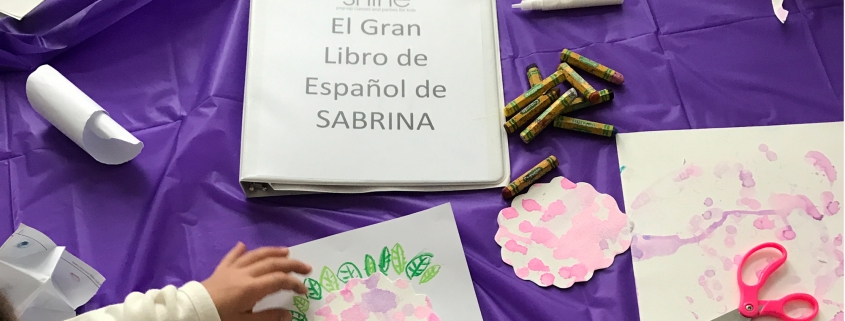Why Your Kids Should Learn a Second Language
“One language sets you in a corridor for life. Two languages open every door along the way.”
– Psycholinguist Frank Smith
Young children naturally absorb new information like sponges and delight in the process of learning. Language instruction is a beneficial experience for toddlers as young as three years old. Not only does it give you something fun to do with them, but there are many developmental, social, and economic benefits. At Shine, we make second language learning interactive, engaging, and fun.
Key Facts on Learning A Second Language at an Early Age
Children who learn a second language have better:
- Tolerance and intercultural awareness
- Academic performance on SAT and ACT tests
- Risk assessment and analytical decision-making
- Creativity, mathematical scores, and basal ganglia function
- Maintenance of focus and attention, despite external stimuli.
- Vocabularies, working memory, and problem-solving abilities
- Ability to gain language fluency due to gray matter increases
- Chance at becoming an executive, as two-thirds speak multiple languages, earning 5-20% more
- Protection from Alzheimer’s, with onset delayed by as much as five years.
Choosing A Second Language For Your Child
You may consider choosing:
- A heritage language that carries cultural and personal significance, like German or Italian.
- A profitable language like Mandarin Chinese, which analysts say is ideal for career development.
- A popularly spoken language, such as Spanish, Chinese, Arabic, or French.
- Kid-friendly languages like Spanish, found in TV (Dora the Explorer) and books (Skippyjon Jones).
- An etymological language like Latin, which helps kids understand the root of English words.
- Easier languages to learn that are written and pronounced the same, such as Spanish or Italian.
What Does It Take For Children To Learn?
Linguists say the most effective teachers are parents, caregivers, immersion schools, and living abroad. Daily preschool classes can be helpful – but only if backed up by foreign language books and time spent with au pairs or babysitters who speak the language. Toddler programs and once-a-week classes train the ear to help kids get a head-start on learning the language later.
“To really learn a foreign language, children must spend 30 percent of their waking time exposed to it,” Christina Bosemark, founder of the Multilingual Children’s Association, told the NY Times. Children with less exposure will have the capacity to understand the language, but will be hindered in speaking it correctly.
Susan Behrens, associate professor of communication sciences and disorders at Marymount Manhattan College, adds: “If you introduce a language in the spirit of play and being embedded in their daily lives, you’re going to be much more successful than if you say, ‘Okay, you’re going to class now.’”
Parents Love Shine’s Listillos Language Immersion Program
One of our most popular programs is Listillos, a Spanish immersion class that uses storytelling, music, visual arts, games, and dance to give children a better understanding of the language and culture. Children as young as pre-school will spend time learning vocabulary and culture based around a particular theme, while older kids will delve into the culture of Spanish-speaking countries with art activities featuring Dia de los Muertos flowers, luchador masks, Colombian, molas, and Aztec codex. Going one step further, the Listillos Uno-a-Uno program adds in private, one-on-one instruction that includes cooking, field trips and advanced art projects. A native Spanish speaker teaches this bilingual class designed for ages 2-10.
By Jenn Fusion for Shine
|



